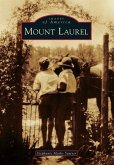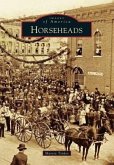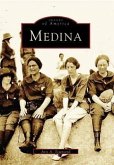The small rural villages of Mattituck and Laurel remained relatively unchanged for more than 100 years until the railroad arrived in 1844. The Long Island Rail Road launched Mattituck-Laurel into a modern era of material progress, where business flourished and the area became a desirable location for summer visitors from New York City. The railroad station stood at the center of commerce and industry. Immigrants arrived and embarked upon new enterprises alongside the already thriving small shops and businesses. During the second half of the 19th century, Mattituck was home to a pickling factory, canning factory, large-scale creamery, and successful fertilizer business. Mattituck and Laurel presents a fascinating glimpse into the historic people and businesses that shaped these two iconic hamlets on the North Fork of Long Island.
Hinweis: Dieser Artikel kann nur an eine deutsche Lieferadresse ausgeliefert werden.
Hinweis: Dieser Artikel kann nur an eine deutsche Lieferadresse ausgeliefert werden.








